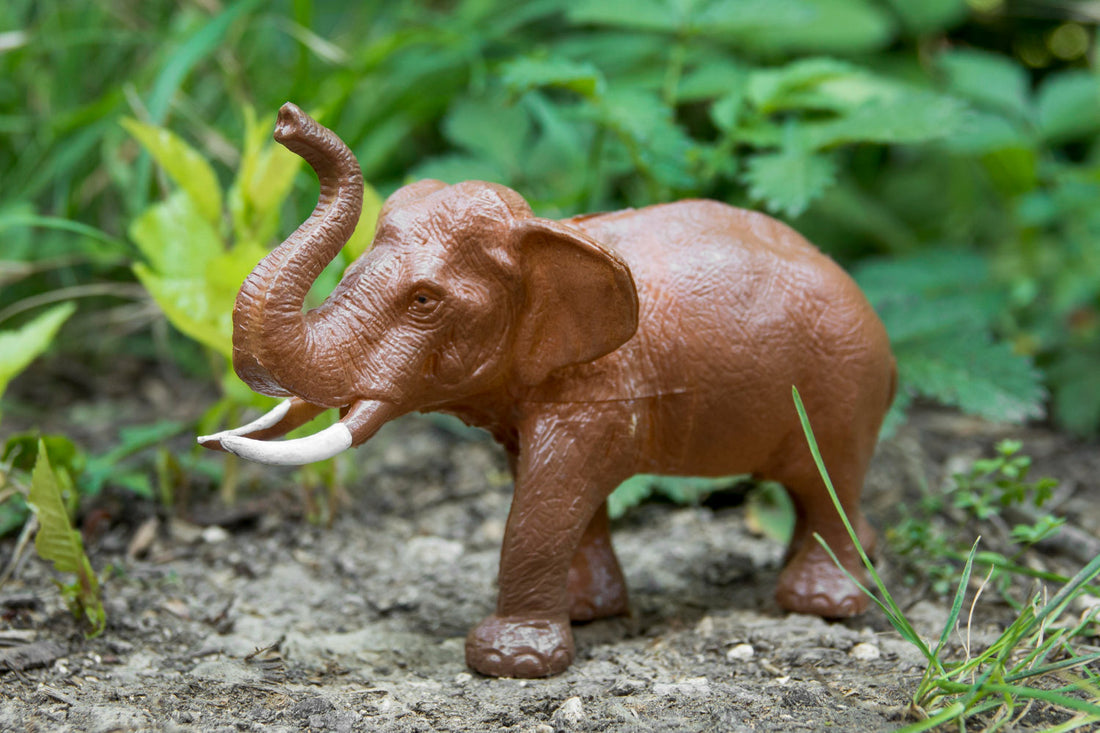Elephant statues have been revered in art, culture, and design for centuries, symbolising prosperity, wisdom, and protection.
Across different traditions, these statues are found in homes, temples, and public spaces, carrying deep spiritual and cultural meanings.
Whether used as decorative pieces or sacred artefacts, elephant statues remain a timeless emblem of strength and fortune.
Let’s Get Straight to the Point
Elephant statues are more than decorative objects; they carry profound cultural and spiritual significance. In many cultures across Asia and beyond, they symbolise wisdom, strength, and prosperity.
The placement and material of these statues influence their impact, while the position of the elephant’s trunk conveys specific meanings, such as attracting good fortune or promoting tranquillity.
Understanding these details helps integrate elephant statues into home decor with purpose and reverence.
The Cultural Significance of Elephant Statues
Elephants are admired worldwide for their intelligence, strength, and social bonds, making their statues powerful symbols in spiritual and artistic traditions. Their enduring presence in temples, homes, and public spaces highlights their universal importance in both religious and cultural contexts.
Symbolism and Meaning
Elephants hold a special place in cultural traditions, embodying qualities that make them highly symbolic in different belief systems.
Wisdom
Elephants are considered among the most intelligent animals, known for their remarkable memory and deep emotional connections. In art and culture, elephant statues represent wisdom, insight, and thoughtful decision-making. These qualities make them ideal for spaces where focus, reflection, and learning are valued.
Strength
With unmatched physical power, elephants symbolise resilience and endurance. Elephant statues are often placed in homes and offices as reminders of perseverance and overcoming challenges, representing both personal and spiritual strength.
Prosperity and Good Fortune
Elephant statues are strongly linked to success and abundance in many cultures. Their placement can enhance positive energy:
- An upward-facing trunk is believed to attract prosperity and blessings.
- Elephant statues at entryways are thought to welcome good fortune while keeping negative influences away.
Protection and Harmony
In addition to their protective roles in folklore, elephants are admired for their strong family bonds and social harmony. Statues depicting elephants in groups represent unity, loyalty, and support, making them meaningful for family homes and community spaces.
Elephants in Mythology and Spiritual Traditions
Elephants are important in many societies' mythology and spiritual beliefs, particularly in Asia and Africa.
India
In Indian traditions, elephants are sacred animals closely associated with Hinduism.
- Ganesha: The elephant-headed deity Ganesha is one of Hinduism’s most beloved gods. As the remover of obstacles and the patron of wisdom and new beginnings, Ganesha statues are commonly placed in homes and temples for blessings and protection.
- Temple Elephants: In South India, elephants are an integral part of temple rituals and processions, symbolising divine favour and prosperity.
Cambodia and the Khmer Empire

Elephants played a major role in Khmer culture, particularly during the Angkor period.
- Angkor Wat: The temples of Angkor feature numerous elephant carvings, reflecting their importance in Khmer society.
- Historical Symbolism: Records suggest that thousands of elephants were involved in the construction of Angkor Wat, highlighting their significance in both labour and spirituality.
Thailand
Elephants hold a royal and spiritual status in Thai culture.
- White Elephants: White elephants are considered sacred and associated with purity, wisdom, and kingship. They have historically been linked to Thai monarchs, symbolising power and prosperity.
- Buddhism: Elephants also appear in Buddhist teachings, representing patience and inner strength. They are commonly depicted in Buddhist temples and artwork.
Africa
In many African cultures, elephants are seen as wise and revered figures.
- Tribal Art: Elephants are often featured in carvings, textiles, and masks, symbolising strength, guidance, and leadership.
- Folklore: African folktales frequently depict elephants as noble creatures embodying wisdom, protection, and community values.
Elephants in Cultural Festivals and Celebrations
Elephants are central to numerous festivals and ceremonies, cementing their cultural importance.
1. Indian Festivals
- Ganesh Chaturthi: This Hindu festival celebrates the birth of Lord Ganesha, during which deity statues are worshipped and later immersed in water as a symbol of renewal.
- Kerala Temple Festivals: Decorated elephants are a key feature of temple festivals in Kerala, where they lead processions and symbolise divine presence.
2. Thailand’s Elephant Festival
- Held annually, this festival honours elephants and their role in Thai history and culture. It features parades, performances, and blessings of elephants, underscoring their revered status.
3. Cambodian Water Festival
- Elephants play a ceremonial role in this festival, which marks the end of the rainy season and celebrates the abundance of water and life.
Symbolic Applications in Modern Times
Elephant statues' cultural and historical significance has evolved, blending traditional meanings with contemporary applications. Today, these statues are embraced globally for their universal appeal.
1. Home Decor and Feng Shui
- Elephant statues are used in feng shui to enhance prosperity and protection in homes.
- Depending on the statue’s placement and the position of its trunk, it can attract good fortune or foster family harmony.
2. Spiritual Practice
- In meditation and yoga spaces, elephant statues serve as reminders of patience, strength, and wisdom, creating an atmosphere conducive to introspection and spiritual growth.
3. Gifting and Symbolism
- Elephant statues are popular gifts, symbolising wishes for success, stability, and happiness. Their timeless appeal makes them meaningful tokens for milestones such as weddings or new ventures.
The cultural significance of elephant statues lies in their rich symbolism and their role as bridges between tradition and modernity.
Representing wisdom, strength, prosperity, and protection, these statues are celebrated across diverse cultures and spiritual practices. Whether placed in homes, temples, or public spaces, elephant statues remain symbols of positivity and resilience.
By embracing their cultural meanings, we honour the values and traditions they represent while bringing their timeless charm into our modern lives.
Elephant Sculptures in Asian Cultures
Elephants hold a sacred and practical role in various Asian traditions, reflected in their prominence in art, rituals, and mythology.
1. India
- Hinduism and Ganesha: The elephant-headed god Ganesha is revered as the remover of obstacles and a patron of new beginnings. Elephant statues often represent his divine attributes of wisdom, prosperity, and protection.
- Sacred Rituals: Elephants are frequently depicted in Hindu temple carvings and used in religious processions, symbolising divine power and sanctity.
2. Cambodia and the Khmer Empire
- Angkor Wat and Beyond: Elephants played a crucial role in Khmer culture, appearing prominently in the art and architecture of Angkor Wat.
- Construction of Temples: Historians estimate that over 6,000 elephants were used in building the Angkor temple complex, highlighting their importance in Khmer history.
- Symbolism in Art: Elephant carvings in the Bayon Temple and Angkor Thom reflect their historical and spiritual significance in Cambodian culture.
3. Thailand
- Royal and Sacred Elephants: In Thai culture, elephants, particularly white elephants, are symbols of royalty and divine favour.
- Buddhist Connection: Elephants are sacred in Buddhist traditions, symbolising patience and mental strength.
Placement and Significance of Elephant Figurines

Cultural traditions and intended purposes guide the positioning of the elephant sculptures and statues in homes or workplaces.
1. Placement for Purpose
- Protection: To guard against negative energies, place two upward-trunk elephant statues at the main entrance.
- Good Luck and Prosperity: An upward-trunk elephant statue placed in the living room facing inward is believed to attract positive energy and blessings.
- Family Harmony: Groupings of elephant statues can symbolise unity and strong familial bonds.
2. Number of Statues
- Single Statue: Represents focus and wisdom, ideal for personal spaces or work areas.
- Pair of Elephants: Often placed at entryways, these represent harmony, protection, and strength.
- Types of Elephant Statues
Elephant statues are crafted from various materials, each adding unique aesthetic and symbolic value.
1. Wooden Elephant Statues
- Crafted from various woods, these statues exude a natural, earthy charm.
- Ideal for traditional or rustic decor, they offer warmth and authenticity.
2. Stone Elephant Statues
- Durable and timeless, stone statues are perfect for outdoor spaces like gardens or patios.
- Their regal appearance adds an air of permanence and strength.
3. Resin (Fibre) Elephant Statues
- Lightweight and versatile, resin statues mimic the look of natural materials like stone or wood.
- They are suitable for both indoor and outdoor use, offering flexibility in decor.
4. Brass Elephant Statues
- Elegant and enduring, brass statues develop a rich patina over time.
- Perfect for classic or eclectic interiors, they symbolise sophistication and tradition.
The Significance of Elephant Trunk Position
The position of an elephant statue’s trunk is considered highly symbolic in many cultures:
- Upward-Facing Trunk: Signifies good fortune, prosperity, and victory.
- Downward-Facing Trunk: Represents stability, calm, and grounded energy.
The choice of trunk position should align with the desired purpose of the statue, whether to invite blessings or promote balance and tranquillity.
Bringing Luck with Elephant Statues
Elephant statues are believed to emanate positive energy, making them ideal for fostering harmony and well-being.
1. Attracting Positive Energy
- Elephant statues are thought to repel negative forces and attract blessings.
- Placing them in strategic locations within homes or workplaces can enhance positive energy flow.
2. Symbol of Unity and Harmony
- Elephants’ social nature makes their statues a powerful symbol of family bonds and close relationships.
- Displaying them in groups reinforces values of loyalty and togetherness.
Incorporating Elephant Statues into Modern Decor
While steeped in cultural and spiritual significance, elephant statues also make versatile decor pieces for modern homes.
1. Aesthetic Appeal
- Their timeless designs and rich symbolism make elephant statues a stylish addition to any space.
- From minimalist resin sculptures to intricate brass figurines, they cater to a variety of tastes.
2. Versatility in Placement
Use smaller statues for tabletops and shelves or larger pieces as statement decor in living rooms and gardens.
Combine with natural elements like plants or stones to enhance their symbolic connection to nature.
Conclusion
Elephant statues beautifully merge cultural heritage with aesthetic appeal, making them valuable in spiritual and decorative contexts.
They bring positive energy to homes and workplaces as symbols of wisdom, strength, and prosperity. Whether crafted from wood, stone, resin, or brass, these statues embody timeless charm and cultural significance.
You can thoughtfully incorporate elephant statues into your space by understanding their meanings, placement, and material choices.
Whether for protection, good fortune, or harmony, they remain a way to honour cultural traditions while enhancing modern living spaces.
FAQs on the Cultural Significance of Elephant Statues
1. What do elephant statues symbolise in different cultures?
Elephant statues symbolise wisdom, strength, prosperity, and protection. In Hindu culture, they are associated with Ganesha, the remover of obstacles, while in Thai and Cambodian traditions, they represent royalty, patience, and divine power.
2. How does the position of an elephant’s trunk affect its symbolism?
An upward-facing trunk symbolises good fortune, prosperity, and victory, while a downward-facing trunk represents stability, calm, and grounding energy. The choice of trunk position depends on the purpose of the statue.
3. Where should elephant statues be placed in a home for good luck?
Place an elephant statue with an upward-facing trunk in the living room, facing inward for good luck. For protection, position a pair of upward-trunk elephants at the main entrance.
4. What materials are commonly used to make elephant statues, and what do they represent?
Elephant figurine statues are made from wood, stone, resin, and brass. Wooden statues symbolise warmth and earthiness, stone statues evoke timelessness and strength, resin statues are versatile and lightweight, and brass statues convey elegance and tradition.
5. Why are elephants considered sacred in Asian cultures?
Elephants are sacred in Asian cultures due to their association with wisdom, strength, and divine presence. In Hinduism, they are linked to Ganesha, while in Buddhism, they symbolise patience and mental fortitude. In Cambodia and Thailand, they represent royal power and spiritual guidance.

